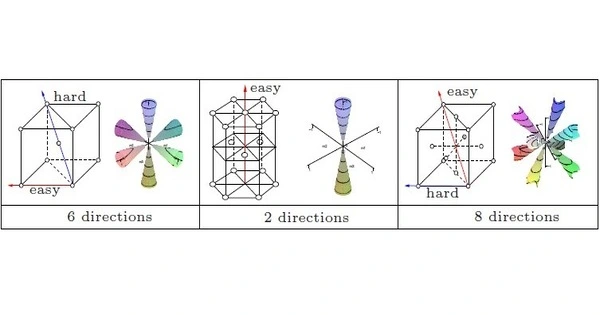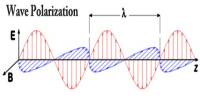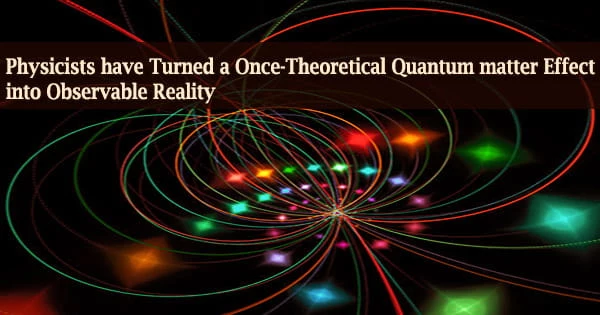Magnetocrystalline anisotropy is a property of some magnetic materials that describes their directional dependence of their magnetic properties. Specifically, it is a measure of how strongly a material’s magnetization prefers to align with a particular crystal axis or plane. It is an intrinsic property of a ferrimagnet, independent of grain size and shape.
A ferromagnetic material is said to have magnetocrystalline anisotropy if magnetizing it in certain directions requires more energy than magnetizing it in others. These directions are usually related to the crystal lattice’s principal axes. It is a type of magnetic anisotropy. In other words, crystalline anisotropy energy is the excess energy required to magnetize a specimen in a specific direction over that required to magnetize it along the easy direction.
This anisotropy arises due to the presence of unpaired electrons in the crystal lattice of the material, which interact with the surrounding atoms and influence the magnetic behavior of the material. It is the energy necessary to deflect the magnetic moment in a single crystal from the easy to the hard direction. The easy and hard directions arise from the interaction of the spin magnetic moment with the crystal lattice (spin-orbit coupling).
Causes
The spin-orbit interaction is the primary source of magnetocrystalline anisotropy. The orbital motion of electrons couples with the crystal electric field to produce the first order contribution to magnetocrystalline anisotropy. The mutual interaction of the magnetic dipoles produces the second order. This effect is weak in comparison to the exchange interaction and is difficult to compute from first principles, though some successful computations have been made.
Application
The magnetocrystalline anisotropy energy (MAE) is a measure of the strength of this directional dependence and is typically expressed in units of joules per cubic meter (J/m³). It is often quantified by measuring the change in energy required to rotate the magnetic moment of the material from one crystal axis to another.
Materials with large magnetocrystalline anisotropy are often used in magnetic data storage devices such as hard disk drives and magnetic tape because they can maintain a stable magnetic orientation even in the presence of external magnetic fields.
















